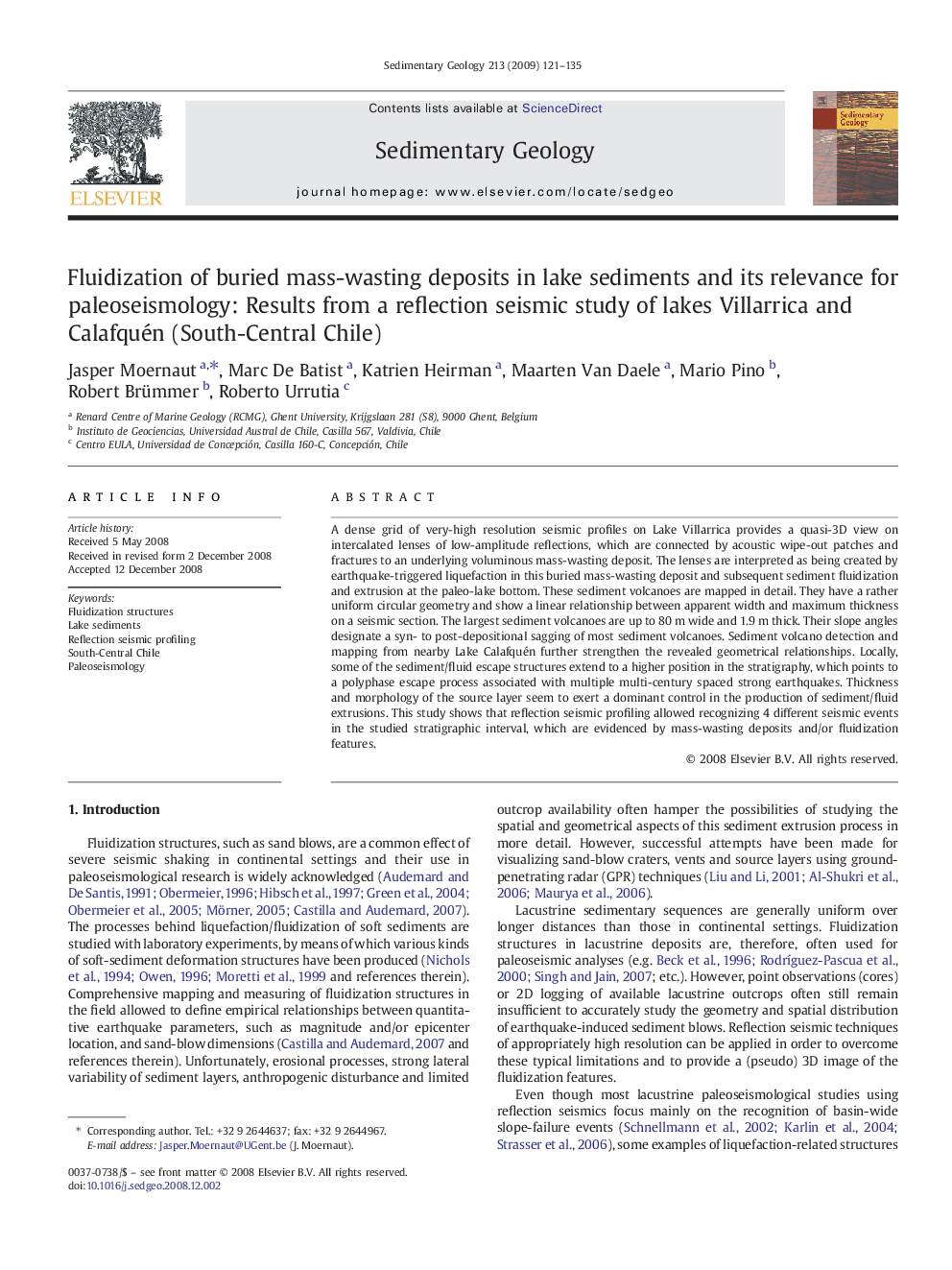| Article ID | Journal | Published Year | Pages | File Type |
|---|---|---|---|---|
| 4690492 | Sedimentary Geology | 2009 | 15 Pages |
Abstract
A dense grid of very-high resolution seismic profiles on Lake Villarrica provides a quasi-3D view on intercalated lenses of low-amplitude reflections, which are connected by acoustic wipe-out patches and fractures to an underlying voluminous mass-wasting deposit. The lenses are interpreted as being created by earthquake-triggered liquefaction in this buried mass-wasting deposit and subsequent sediment fluidization and extrusion at the paleo-lake bottom. These sediment volcanoes are mapped in detail. They have a rather uniform circular geometry and show a linear relationship between apparent width and maximum thickness on a seismic section. The largest sediment volcanoes are up to 80Â m wide and 1.9Â m thick. Their slope angles designate a syn- to post-depositional sagging of most sediment volcanoes. Sediment volcano detection and mapping from nearby Lake Calafquén further strengthen the revealed geometrical relationships. Locally, some of the sediment/fluid escape structures extend to a higher position in the stratigraphy, which points to a polyphase escape process associated with multiple multi-century spaced strong earthquakes. Thickness and morphology of the source layer seem to exert a dominant control in the production of sediment/fluid extrusions. This study shows that reflection seismic profiling allowed recognizing 4 different seismic events in the studied stratigraphic interval, which are evidenced by mass-wasting deposits and/or fluidization features.
Related Topics
Physical Sciences and Engineering
Earth and Planetary Sciences
Earth-Surface Processes
Authors
Jasper Moernaut, Marc De Batist, Katrien Heirman, Maarten Van Daele, Mario Pino, Robert Brümmer, Roberto Urrutia,
